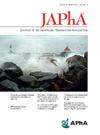Perceptions of pharmacist-furnished nicotine replacement therapy among participants who smoke in California
IF 2.5
4区 医学
Q3 PHARMACOLOGY & PHARMACY
Journal of the American Pharmacists Association
Pub Date : 2025-06-12
DOI:10.1016/j.japh.2025.102450
引用次数: 0
Abstract
Background and Objective
California’s Central Valley has high rates of tobacco product use and low rates of access to primary care providers. In 2016, California sought to increase access to cessation treatment by allowing pharmacists to prescribe nicotine replacement therapy (NRT). We sought to identify the extent to which this prescribing authority has been integrated into practice.
Methods
From December 2023 to May 2024, we surveyed adult California participants (n = 271) who smoke about their smoking patterns, perceptions towards NRT, experiences with receiving tobacco cessation resources in pharmacies. Participants were recruited via email and in person. We analyzed participants’ smoking and quitting history, perceptions of NRT, and experiences with tobacco cessation , comparing residents of California’s Central Valley (n = 52) to other regions of the state (n = 219).
Results
Smoking rates were comparable for respondents in the Central Valley and those residing in other regions of California, although older respondents tended to smoke more heavily. Respondents had few positive perceptions regarding NRT and expressed concerns about perceived side effects and the risk of dependency; past use of NRT was also associated with lower odds of quitting.
Conclusions
Despite the low risks and high efficacy of prescription NRT for tobacco cessation, participants in our sample expressed concerns about its perceived side effects, potential for dependency, and a belief that it was not useful. Our findings suggest that additional efforts are needed to improve education about NRT, such as via pharmacist-provided tobacco cessation services.
加州吸烟者对药剂师提供的尼古丁替代疗法的看法。
背景和目的:加州中央山谷的烟草制品使用率高,初级保健提供者的使用率低。2016年,加州试图通过允许药剂师开尼古丁替代疗法(NRT)来增加戒烟治疗的可及性。我们试图确定这一开处方的权力已融入实践的程度。方法:从2023年12月到2024年5月,我们调查了加州成年吸烟参与者(n = 271),了解他们的吸烟模式、对NRT的看法以及在药店接受戒烟资源的经历。参与者通过电子邮件和面对面的方式被招募。我们分析了参与者的吸烟和戒烟史、对NRT的认知和戒烟经历,并将加州中央山谷的居民(n = 52)与该州其他地区的居民(n = 219)进行了比较。结果:中央山谷的受访者和居住在加州其他地区的受访者的吸烟率相当,尽管年龄较大的受访者倾向于吸烟更多。受访者对NRT几乎没有积极的看法,并对所感知的副作用和依赖风险表示担忧;过去使用NRT也与较低的戒烟几率有关。结论:尽管处方NRT对戒烟具有低风险和高效率,但我们样本中的参与者表达了对其可感知的副作用、潜在依赖性的担忧,并认为它没有用。我们的研究结果表明,需要进一步努力提高NRT的教育,例如通过药剂师提供的戒烟服务。
本文章由计算机程序翻译,如有差异,请以英文原文为准。
求助全文
约1分钟内获得全文
求助全文
来源期刊
CiteScore
3.30
自引率
14.30%
发文量
336
审稿时长
46 days
期刊介绍:
The Journal of the American Pharmacists Association is the official peer-reviewed journal of the American Pharmacists Association (APhA), providing information on pharmaceutical care, drug therapy, diseases and other health issues, trends in pharmacy practice and therapeutics, informed opinion, and original research. JAPhA publishes original research, reviews, experiences, and opinion articles that link science to contemporary pharmacy practice to improve patient care.

 求助内容:
求助内容: 应助结果提醒方式:
应助结果提醒方式:


